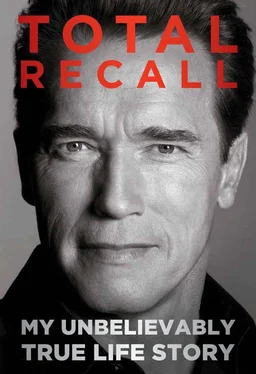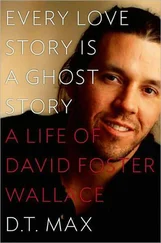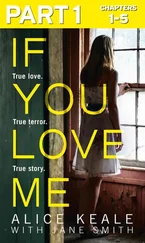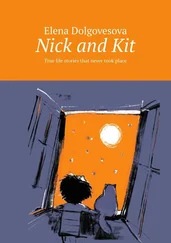I learned there is a whole art to shaping a proposition so that it doesn’t put people off or cause unnecessary fights or resistance. For instance, to keep after-school from crowding out existing programs that people liked, we designed it to take effect no earlier than 2004, and only if the California economy was growing again and annual state revenues had gone up by $10 billion. To hold down the overall cost, we made it a grant program to which schools had to apply. And we made it so that wealthy districts that already had after-school programs would be expected to wait in line behind districts that couldn’t afford them.
All the same, when education experts estimated the annual cost—$1.5 billion—we were all in sticker shock. Even in a state with $70 billion in revenue, that was much more than voters would approve. So before we even started campaigning, we scaled down our proposal to cover just middle schools, not high schools. This decision was painful, but something had to go, and the younger kids were more vulnerable and needed the programs more. Narrowing the program cut the price tag by more than $1 billion.
But before we filed it in late 2001, we circulated drafts and went around making presentations to unions and civic groups: teachers, principals, school superintendents, chambers of commerce, law-enforcement officials, judges and mayors and other public officials. We wanted the broadest possible coalition—and the smallest possible number of enemies. Just as Pete Wilson’s guys had predicted, I found the fund-raising part hard at first. The reason I wanted to be wealthy was that I never wanted to ask anyone for money. It was so against my grain. When I made the first solicitation, I was literally sweating. I told myself it wasn’t really me asking, it was the cause.
That first call was to Paul Folino, a technology entrepreneur and a friend of the Wilson campaign, and after a short and gracious conversation, he committed $1 million. My second call was to Jerry Perenchio, a producer and mover and shaker who ended up owning the Spanish-language television network Univision and then selling it for $11 billion. I knew Jerry personally. He promised to raise another $1 million. Those were heavenly calls; I felt so relieved when I hung up the phone. Then I made smaller calls for $250,000. I ended the day flying high.
The next day I went to hit up Marvin Davis in his office in the Fox Studios tower. He weighed about four hundred pounds. “What can I do for you?” he asked. I’d made movies for Fox, and his son had produced Predator . I gave him the whole rap, putting a lot of enthusiasm into explaining what I could do for California. But when I looked up from my notes I realized he’d fallen asleep! I waited until he opened his eyes again, and then said, “I totally agree, Marvin, we have to be fiscally responsible.” He could sleep all he wanted as long as he gave us the check. But instead, he said, “Let me talk to my guys. We’ll be in touch with you. It’s a very courageous thing to do.” Of course I never heard back.
Soon Paul Folino hit on a solution to make me feel more comfortable asking for money. He suggested that we make my fund-raisers low-key: dinner parties and small receptions. We found that as soon as I was in a relatively informal setting where I could schmooze, I was able to pass the hat very effectively.
I loved finding new allies. In November I took our draft of Prop 49 to John Hein, the political chief of the California Teachers Association, the most powerful union in the state. John was used to people asking for favors. I didn’t expect him to be very receptive because Republicans and unions usually don’t mix. So when I made my pitch, I told him right off the top, “We need no money from you. If you endorse this, you don’t have to put a million dollars into the funding or anything like that. I’ll go out and raise the money. But we want to go into this together.” I also made the point that after-school programs not only help the kids but also reduce the strain on their teachers.
To my delight, he approved of our idea. In fact, he recommended only two changes in the proposal, the main one being that we add some language about hiring retired teachers. This wasn’t something I wanted to encourage too much, because young kids relate better to young people, especially after a whole day of teachers and school. They want counselors in jeans and with spiky hair, who can serve as parent figures but who don’t look like them. Still, it wasn’t a lot to ask, and we made the deal. And ultimately it worked out fine because not that many retired teachers wanted to go back to work anyway.
_
By normal standards, the start of an election year is way too early to put a ballot initiative before the public, since the vote isn’t until November. But I had to juggle Prop 49 and Terminator 3 , which was ready to start filming. So we had our kickoff in late February, just before the California state primaries. Instead of some boring press conference, I did a two-day fly-around of cities up and down the state, with rallies and kids and hoopla to get us on TV and pump up support.
Then we went back to the slow, painstaking work of building alliances and raising funds. Just like bodybuilding, campaigning is all about reps, reps, reps. I met with Parent-Teacher Associations, city councils, taxpayer groups, and the California Medical Association. This is when I discovered that raising cash from the set of a movie was a huge advantage, and Terminator 3 was the greatest set of all. People loved coming to see the special effects, the loading of the weapons, the explosions. Sometimes I’d meet them with my makeup still on: an LA Times columnist interviewed me one day when the Terminator had been through a fight. About a quarter of my face and scalp were bloody and torn off, exposing my titanium skull. It was a funny way to be talking about middle school.
The California attorney general, Bill Lockyer, also came to visit, and he was a Democrat! I knew him from T2 , when he was a state senator who helped get us permission to film the scene in San José where the T-1000 rides a motorcycle out of a second-story window into a helicopter. I talked to him about the initiative. We needed him because it’s the attorney general’s office that issues an opinion on the cost and legal propriety of every initiative. He was on the set the day I was hanging from the hook of a giant crane. This was like heaven for him. No wonder he went for the initiative.
In September, after Terminator 3 moved into postproduction, I went to Sacramento to ask for endorsements from state senate and state assembly leaders. I was curious to see what they’d say, although I wasn’t holding my breath. The legislature was two-thirds Democrats, for one thing. And elected officials usually hate ballot initiatives because they reduce their power and make the state harder to govern. In fact, our loudest opponent was the League of Women Voters, which was adamantly against what it called “ballot box budgeting” for any program. Still, I had in my pocket a three-page, single-spaced list of all the organizations that endorsed us; we’d built the widest coalition that anybody could remember for a ballot initiative. That was going to be hard for the politicians to ignore.
One of my first stops was Bob Hertzberg, the speaker of the assembly. Bob is a smart, ebullient Democrat from the San Fernando Valley, about the same age as Maria. He’s so friendly that his nickname is Huggy. Within two minutes, we were swapping jokes. “What’s not to like?” he said about our ballot proposition. But he warned me not to expect support from the Democratic Party itself. “God forbid we should endorse a Republican initiative,” he wisecracked.
Читать дальше












